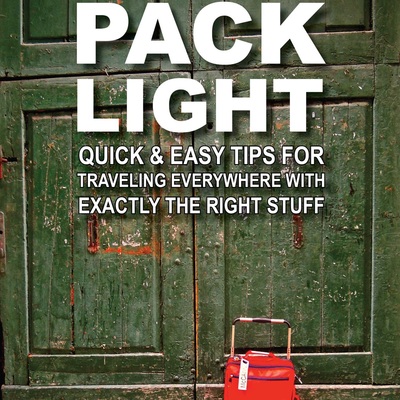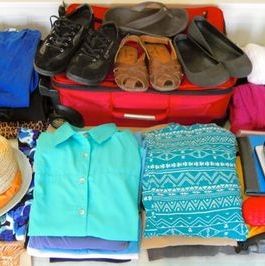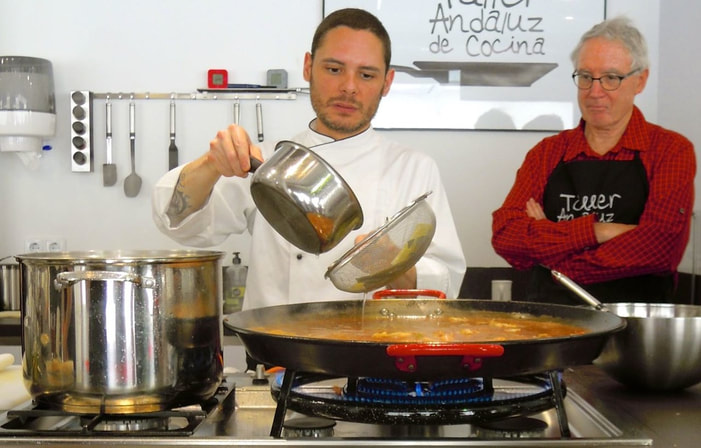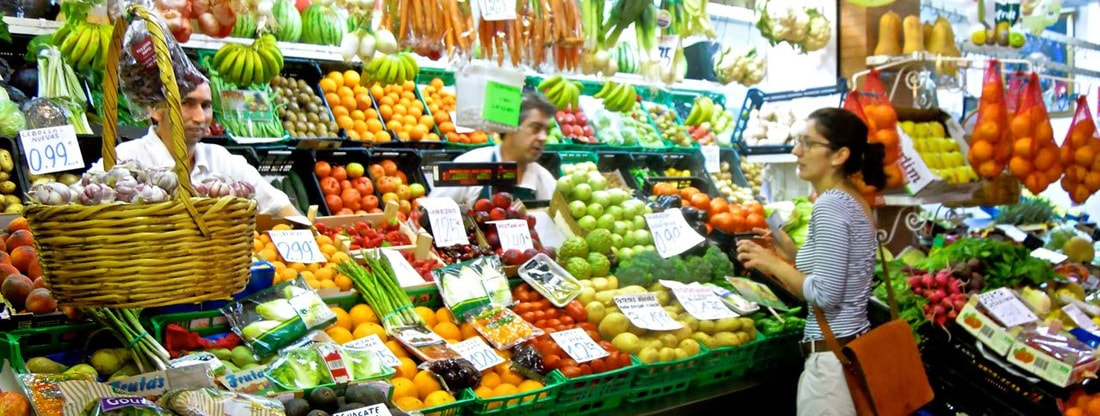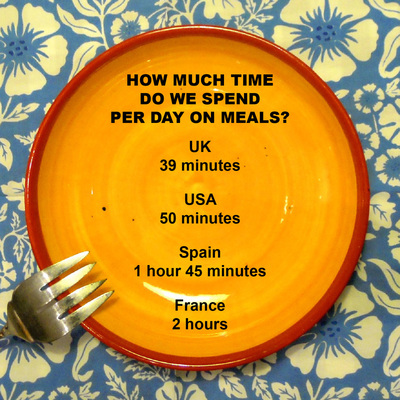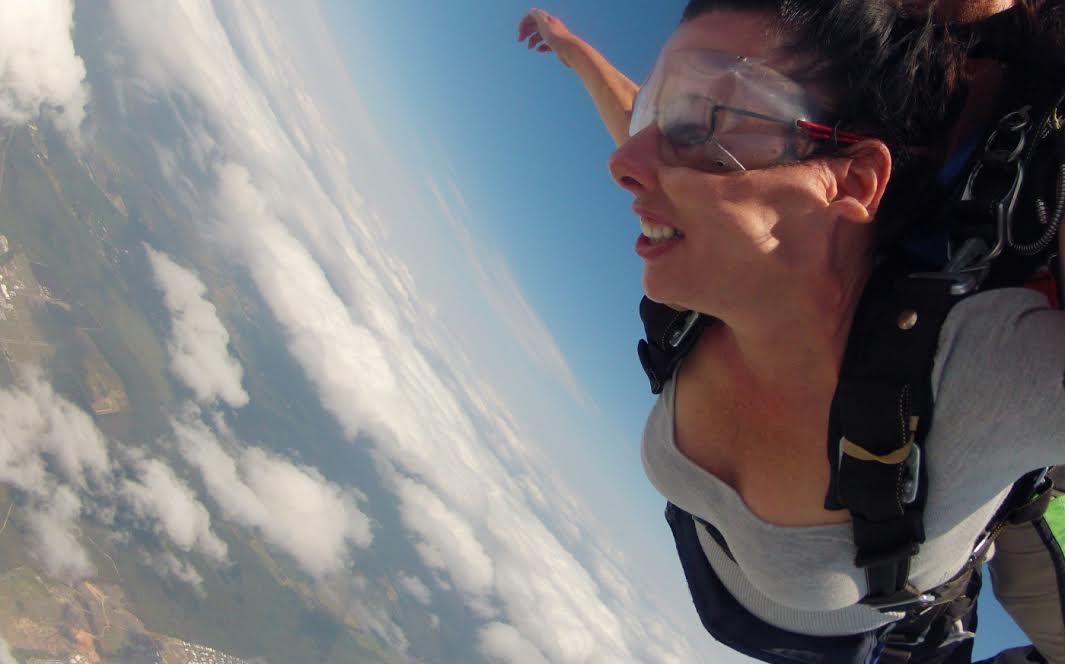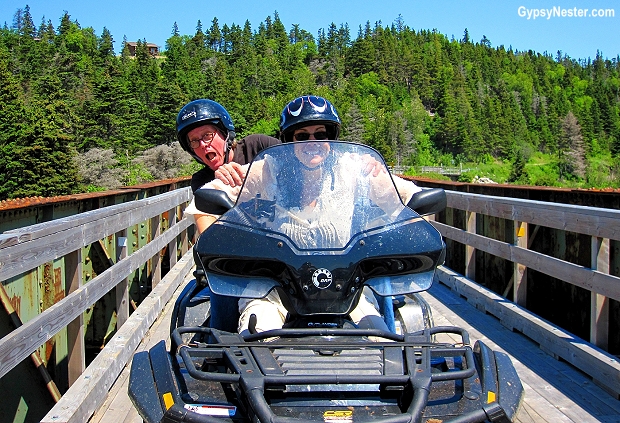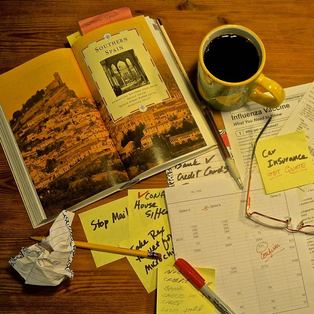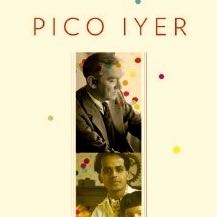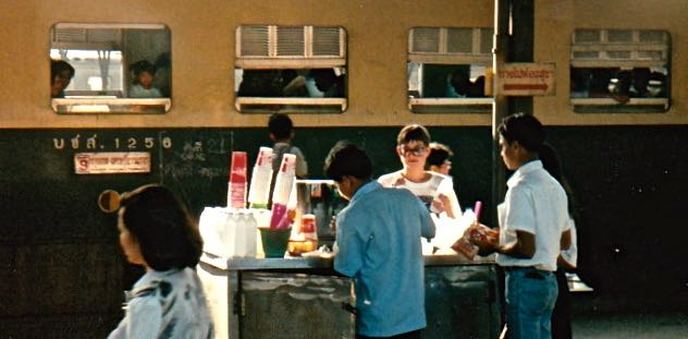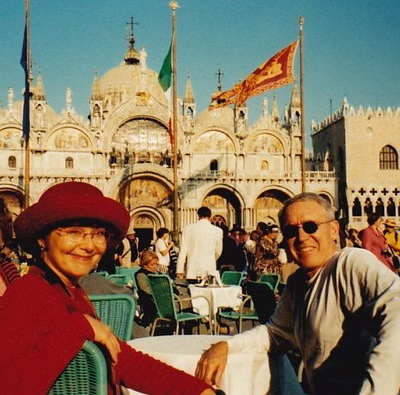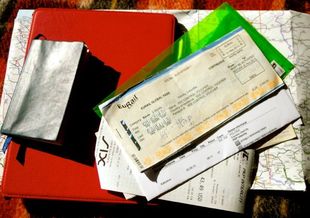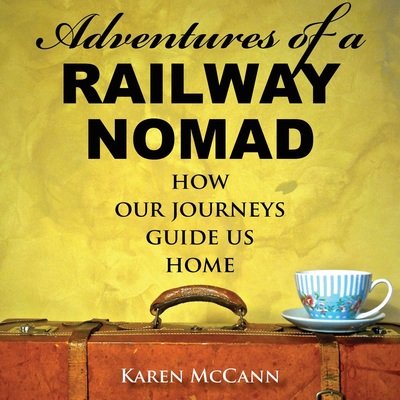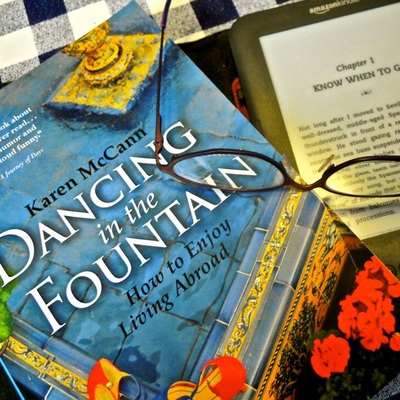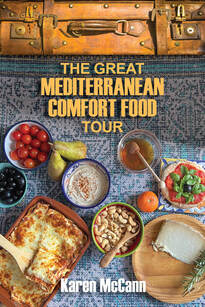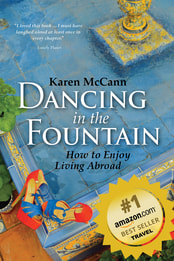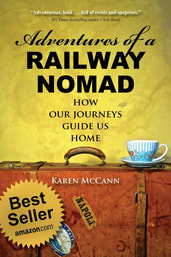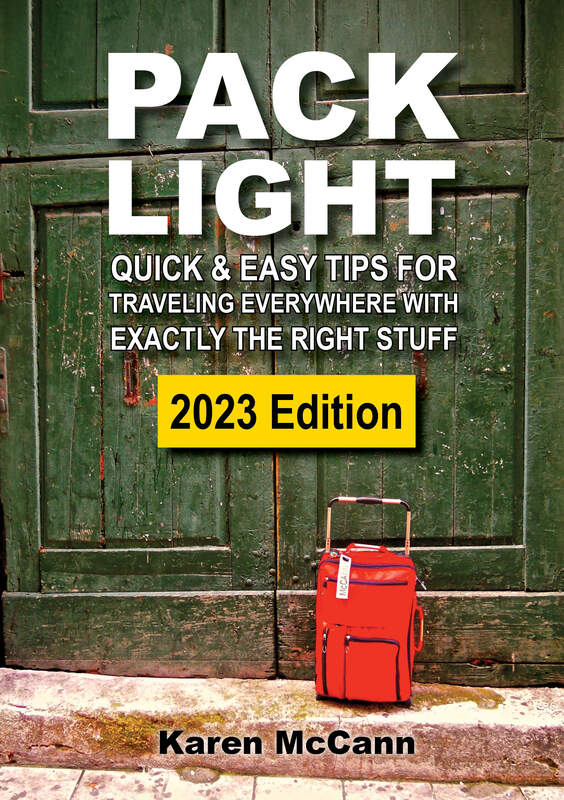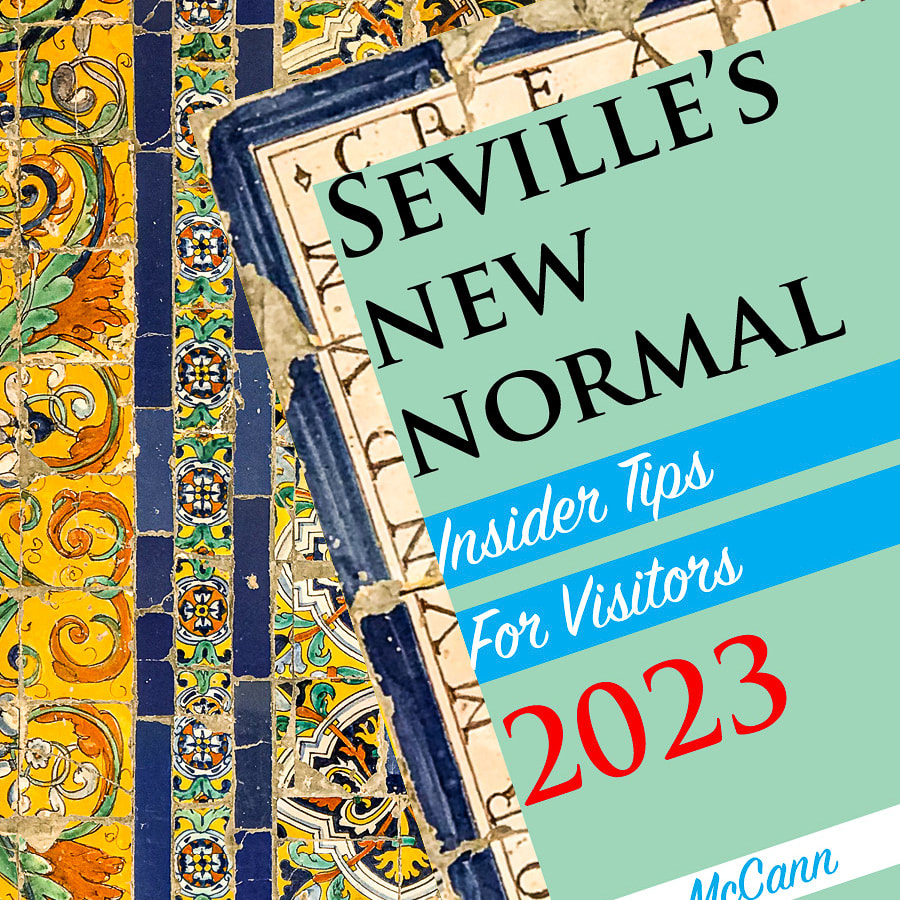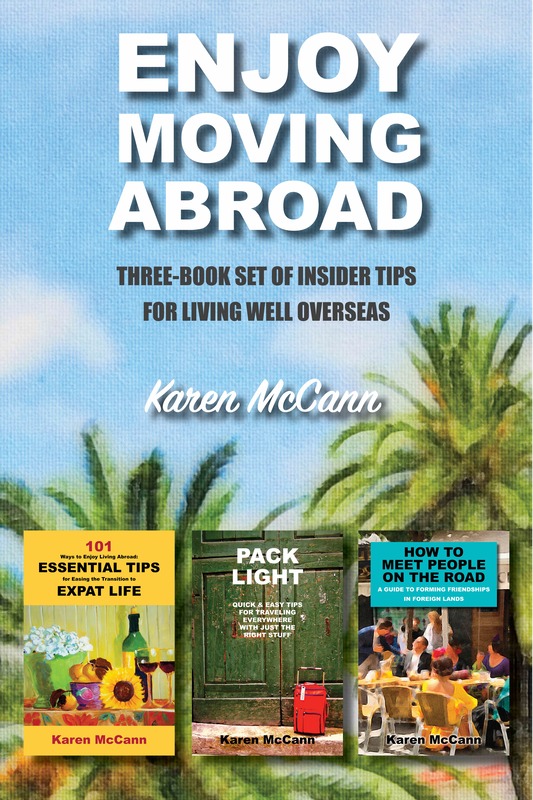|
“Do you have any ideas for travel experiments?” Jeff wrote to Clara, a woman he’d never met, in a message on the OkCupid dating site. “I have a few things I dabble in, and I’m going to push one of these experiments to the nth limit in June.” Turned out he meant weeks of unstructured travel overseas with no luggage whatsoever. Clara found the suggestion “disturbing.” (Ya think?) “And yet,” she recalls, “the idea of moving completely unencumbered through space and time was tantalizing.” The two eventually decided to get to know one another via three weeks of travel that took them 3500 miles through eight countries — without changing their clothes. “They stole my idea!” Rich said indignantly last week, when a friend sent him Clara’s article The Craziest OkCupid Date Ever. Since the 1990s he’s been trying to persuade me to take off on a journey carrying nothing but a toothbrush, and so far I’ve found the idea utterly resistible. Skimming the article, I said, “Hah! She carried a lot more than a toothbrush. Says here she had a small purse for toiletries, and an iPad Mini.” There seems to be a general divide between men, who like to jam a few things in their pockets, and women, whose clothes seldom have sufficient pockets to go out for coffee, let alone cross international borders, and instead sling a purse over one shoulder. But let the record show that all of them are traveling with significantly more than just a toothbrush. When travel journalist Rolf Potts accepted the No Bags Challenge and circumnavigated the entire globe without luggage, he opted for one of those multi-pocket travel vests like the one I took on our railway adventure. “Naturally, my packing list had to be simple,” he says. “In addition to the clothes on my back (cargo pants, boots, socks/underwear, T-shirt) I brought a toothbrush and a small tube of toothpaste, a small deodorant stick, two small bottles of concentrated liquid soap, sunglasses, a small tube of sunscreen, an iPod touch and foldable Bluetooth keyboard, a small digital camera, a small flashlight, a credit/cash card, and my passport. All of these items fitted, along with a change of socks, underwear, and T-shirt, into the inner pockets of a jacket/vest. All told, my total kit weighed less than two kilos.” So how did it go? I’ll let Rolf tell you himself. 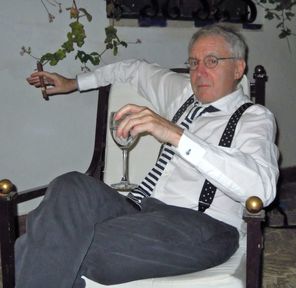 Rich McCann, trouble of the best variety Rich McCann, trouble of the best variety I was beginning to think that suitcase-free travel was a young person’s game when I ran across the book Freedom from Luggage: Packing Light to Simplify Travel written by retirees Roger and Kyanne Anderson. “We’ve learned,” they wrote, “that packless travel lifts the spirit by eliminating many burdens and adding a sense of adventure.” Among the benefits they describe are some that will particularly resonate with older travelers, such as not having to haul bags up long flights of stairs or hoist them into overhead compartments. “No luggage, no lifting” is one of their slogans. I could get used to that! After reading Clara’s article last week, I had what I can only assume was a moment of temporary insanity. I found myself agreeing to go away with Rich on a luggage-free weekend, so long as I could take a purse with a few essentials. Rich was overjoyed. Being a purist, he’s planning to live his dream and carry nothing but a toothbrush. Will I share my toothpaste and sunscreen with him? Probably. That’s one of a dozen questions we’ll have to negotiate, along with when we’ll go (most likely in October, as the summer is very full already) and where (we’re thinking north through Spain into France). I still can’t believe Rich finally got me to agree to this crazy travel experiment. “This guy,” Clara wrote of her first impression of Jeff, “was trouble of the best variety.” And after 30 years, I’m still saying the same about Rich. YOU MIGHT ALSO ENJOY
4 Comments
 Visiting Seville's butcher stalls can be a real eye-opener. Visiting Seville's butcher stalls can be a real eye-opener. When I first moved to Seville, I was taken aback to see whole rabbits, fur intact, hanging by their heels in the butcher’s stall. “Are you supposed to skin them yourself?” I asked incredulously of an American friend married to a Spaniard. “No, they do it for you,” she reassured me. “My mother-in-law says they leave the fur on to make sure you know that it’s not a cat.” In the lean years following the Spanish Civil War, she explained, straying pets were considered fair game by hungry neighbors struggling to feed their family. Since then I’ve learned a lot about the way Spanish food reflects local culture and history. For instance, salmorejo (a denser cold soup similar to gazpacho) and espinacas con garbanzos (spinach with chickpeas) are thickened with day-old bread because in the lean years a stale baguette was far too precious to throw away. And then there’s paella, which got its start in the rice fields of 18th century Valencia. “These were agricultural people, and they used whatever they had around,” Chef Victor told me during a cooking workshop last week. “Snails, rabbit, chicken.” Water voles and eels were popular then, too, I’ve heard. Ingredients may have evolved over the years, but one tradition is still honored, at least here in Spain; paella is prepared by men. And this totally works for me. My husband, Rich, makes terrific paella and is much in demand for potluck gatherings. Last week, discovering that Victor’s hot new cooking school, Taller Andaluz de Cocina, was offering a half-day paella workshop, Rich and I gathered up some visiting friends and enrolled. "Spanish cooking,” Victor told the eleven eager faces around his worktable, “isn’t about fancy techniques. It’s about good ingredients . . . and patience.” Our class was held inside Triana Market, where generations of locals have shopped for fresh produce, meat, and fish. Victor showed us how to prepare salmorejo and espinacas con garbanzos as well as paella (and with his permission, I'm sharing his recipes here). He assigned us enough tasks to make us feel part of the process while wisely reserving the tricky, critical bits for himself. The pace was leisurely, allowing ample time to chat with other students, all vacationers from distant countries. By the time we sat down to eat, Rich had acquired several tricks for upping his paella game, and I’d learned a lot about food tourism. Ten years ago, food was a relatively minor consideration in planning vacations. Today, thanks in large part to popular cooking shows and the desire to post mouthwatering photos on social media, food tourism has become a $150 billion a year industry. At first it was all about dining on trendier fare in unusual places, such as pop-up restaurants and food trucks. Then diners invaded the kitchen to watch the magic happen and rub shoulders with the chef. Now travelers are visiting farms and markets to see edibles at their source, and spending time in the kitchen wearing an apron and wielding a paring knife.  Beware of green peppers in a Mexican kitchen. Beware of green peppers in a Mexican kitchen. Naturally a whole new industry has sprung up to feed this demand. Websites such as EatWith (where we booked Victor’s class), VizEat, and MealSharing enable you to arrange to dine in a local home in hundreds of cities around the world. Add “cooking class” to your search criteria, and you can often spend hands-on time in the kitchen as well. Not all are created equal, and you’ll want to read listings carefully and notice what’s said – and not said – in the reviews. For instance, is the chef fluent in a language you happen to speak? Are there gluten-free options? Is wine included? Whether you're in a foodie mecca or a culinary backwater, chances are a cooking class can provide an affordable, unique experience with great food, lively socializing, and a vivid taste of local culture. I’ll never forget de-seeding hot peppers in a Mexican kitchen some years ago; my fingers stung for hours, and I learned my first Spanish swear words. Sore fingers seemed a small price to pay for a great meal and rich cultural experience. However, there are limits. I’d do hot peppers again, but I definitely draw the line at skinning rabbits. YOU MIGHT ALSO ENJOY With kids in college and slender savings from their careers (she was a web designer, he was a musician), Veronica and David couldn’t afford globetrotting in grand style. “When we first set out,” David recalled, “we were in a 1983 Chevy motor home that we found on eBay for $3,200. Obviously we were doing things as cheaply as possible. After our first year we figured up our costs and found that we weren’t spending any more than we did when we were keeping up a house. Over the years we have found ways to [finance our] travel by writing freelance travel pieces and with our website, GypsyNester.com.” This year they published their first book, Going Gypsy: One Couple's Adventure from Empty Nest to No Nest at All. Inevitably the discussion turned to losses and gains. “None of the things that we have given up are permanent,” David pointed out. “We can always go back to a settled life, if we choose. What we have gained is permanent though. We will always have the memories of all of the amazing places we have seen, all of the history we have learned, and the experiences of a lifetime.”  A classic case of culoinquieto A classic case of culoinquieto Like most Americans, I was raised on stories about people pulling up stakes and heading off into the unknown: my great-great-grandparents crossing the Atlantic, my great-grandparents going west by covered wagon. Itchy feet seem to be in our DNA; by the time I left for college, I’d lived in seven homes in three states. Today, I’m hard pressed to think of an American family that isn’t scattered across half the continent, if not half the globe. The Spanish refer to this as having a culoinquieto, literally a restless backside, conjuring images of schoolboys squirming in their chairs, longing to be elsewhere on a fine day. While many Americans have a touch of culoinquieto, few have incorporated it into their lives as enthusiastically as Veronica and David James. Hitting the road in their forties, they’ve logged more than 10,000 miles on America’s back roads and more recently have found themselves in Europe, Asia, and beyond. I recently asked them what precipitated their odyssey. “Like most couples,” Veronica told me, “we had a big ‘now what?’ moment when our last child was ready to fly the nest. Ours came in 2008 when we were living on the island of St. Croix in the U.S. Virgin Islands. With all the kids gone, we thought it was a good time to go back up to the States and reconnect with family and friends. Our original idea was to take about a year — a victory lap of sorts. After seeing everyone, we had another ‘now what?!’ moment and decided that we liked our new lifestyle and wanted to keep traveling.” Seeking once-in-a-lifetime experiences, the two have eaten silkworms in China, kayaked with humpbacked whales in Newfoundland, and gone skydiving in Australia. “Once I conquered that first fear of leaving home,” Veronica told me, “I have actively sought out ways to face my fears head on. I find that writing about jumping out of an airplane, zip lining, and regular, everyday fears helps a lot, too. My biggest fears (and ones I will always will refuse to participate in) are karaoke and bungee jumping. “ I’m with you all the way on those two, Veronica!
As Veronica and David’s story reminds us, when we set out in search of adventure what we really discover is ourselves. All journeys are inner journeys. The excitement of exploration lets us shed our ordinary preoccupations long enough to feel the rapture of being alive. “Travel is like love,” says author Pico Iyer, “mostly because it’s a heightened state of awareness, in which we are mindful, receptive, undimmed by familiarity, and ready to be transformed. That is why the best trips, like the best love affairs, never really end.” YOU MIGHT ALSO ENJOY There is a wonderful moment at the start of every train journey when you arrive at the station to discover what the next short chapter of your life is going to look like. Will it be this? Or this? Or this? As regular readers of this blog know, in 2013 I traveled 6000 miles, mostly by rail through Eastern Europe, and after the “stolen” passports at the Hungarian border, the Gypsy train in rural Transylvania, and the ferocious Bulgarian immigration official (if that’s really what he was), I know that anything can happen. And to me, that’s the delight of train travel. You never know what’s going to show up on the platform, in your compartment, or upon arrival at your destination. As Evelyn Waugh put it in Black Mischief, “One learnt to expect anything, but was always surprised.”  Mark Smith on the Rangoon-Mandalay overnight express Mark Smith on the Rangoon-Mandalay overnight express I recently had the opportunity to discuss the unexpected delights of railway journeys with one of the most famous train travelers of our era, Mark Smith, better known as The Man in Seat 61. During a management career with British Rail, he was much struck by A) the advantages of going places by train, and B) the frustration of dealing with a travel industry that, as he put it, “only wants to sell you flights, flights, car hire, and more flights.” He launched a personal crusade via a website designed to inspire and assist railway travelers, and the hobby grew into a career that’s made him a household name among train buffs around the world. What is it, I asked Mark, that so many people just don’t get about rail travel? “People don't understand that by train (and for that matter, ship) the journey itself can be interesting, fun, romantic, adventurous, and an integral part of your experience,” he replied. “It's not just about 'getting there'! For those who have only experienced watching the hands on their watch go round on a long-haul flight, or droning down an eyesore motorway, that can be hard to grasp!” 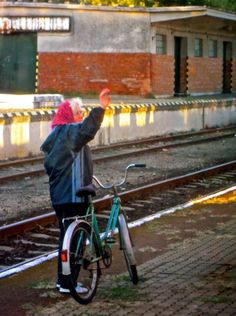 Fond farewell in a Hungarian station Fond farewell in a Hungarian station The richer experience of a train journey can teach us a lot more than we’d learn from hours of in-flight movies. “Travel," he pointed out, "broadens the mind — at least it does by train and other local transport, as they reflect the country and culture through which you pass, and there's both the time and space to interact with other people.” Sometimes those interactions take surprising turns. “I got engaged on a train,” he told me. “To my girlfriend of just 6 months, without anything pre-planned. It was the Venice Simplon Orient Express, somewhere in the Brenner Pass, and I don't even remember who said what exactly to whom. But it was a very special train and it weaved its special magic and here I am ten years later with a wife, two kids, a cat, and a mortgage.” When asked for his most valuable travel tip, Mark advised, “Never travel without a good book and a corkscrew...” Words to live by! YOU MIGHT ALSO ENJOY
 Blarney Castle steps. Photo: Joseph Mischyshyn Blarney Castle steps. Photo: Joseph Mischyshyn I probably don’t need to tell you that I have kissed the legendary Blarney Stone, officially the Stone of Eloquence, which is said to confer the gift of gab. To get there, you climb up and down narrow, winding stone staircases deliberately engineered with small distortions to trip up invaders. I don’t know how well that worked on sword-wielding knights back in the day, but just two steps from the bottom of her descent, my friend missed her footing, tumbled forward, and broke her ankle. Arriving at the local hospital, I felt as if I’d walked into a time warp. This was back in the 1990s, but it looked like the 1940s. Where were the computers? Why wasn’t anything plastic? The metal-frame beds, canvas privacy screens, and glass water carafes appeared so anachronistic that I found myself glancing at the wall to see if there were signs saying, “Loose lips sink ships!” Any sense of technological superiority I might have felt died a natural death in the next twenty minutes, as it became obvious that my friend was receiving excellent medical care. And I learned a valuable lesson about judging health centers by their gloss. But respecting medical systems, foreign or domestic, doesn’t mean placing blind faith in them. When it’s my life on the line, I tend to take an active interest in the proceedings. And my experiences with hospitals around the globe suggest that you can tilt the odds a bit more in your favor. 1. Bring a care partner along. If you’re ill or injured, you’re not at the peak of your game, and you’ll need another set of eyes, ears, and brains to help you sort it all out, especially in a foreign language. Ideally, you’ll have a family member or travel companion with you; in a pinch, ask your local embassy, consulate, or a church to recommend someone who can serve as your advocate and translator. Find an online translation resource such as Reverso that includes a medical dictionary.  For medicinal purposes only, of course. Photo: Laurie Avocado For medicinal purposes only, of course. Photo: Laurie Avocado 2. Tell the staff about your health history and show them all your medications, including over-the-counter remedies and street drugs. (You can ask your mom to step out of the room while you discuss your Viagra regimen and marijuana habit with the nurse.) 3. Buy a notebook, and ask your care partner to write down everything — the name of doctors and staff, and the diagnosis, treatment options, and medications —in both English and the local language. Insist on meeting the doctor in charge. And get the name of the hospital administrator. In movies they’re always spineless moneygrubbers, but in real life many are competent problem solvers with clout. 4. Develop a cooperative but firm relationship with the staff. “I start yelling the minute I get off the elevator,” a patient’s sister once told me. “I want them to know they have me to deal with.” Yikes! I strive for a more congenial approach and comply with local customs regarding respectful behavior. But when there’s genuine danger, you can’t afford to take “no” or “wait until morning when the doctor’s here” for an answer. Keep pushing the decision up the line until you get action.  Quaint looks don't mean the quality of care has to be old fashioned. (Porto, Portugal) Quaint looks don't mean the quality of care has to be old fashioned. (Porto, Portugal) 5. Check with your insurance carrier to find out what’s covered. Many older Americans are aghast to discover that Medicare doesn’t pay for treatment overseas. Those who buy trip and evacuation insurance may be pleasantly surprised. A friend at the Seville consulate asked me to look in on a hospitalized American vacationer, who gleefully reported that her insurance was sending her home on a special plane with a private nurse. It appeared to be the highlight of her trip. Most of us feel about hospitalization the way Woody Allen feels about dying: We don’t mind the idea, we just don’t want to be there when it happens. But with luck and a proactive attitude, the medical attention we find on the road can save our lives, or like my friend in Ireland, help us get back on our feet again in time to climb the next castle that comes along. YOU MIGHT ALSO ENJOY |
This blog is a promotion-free zone.
As my regular readers know, I never get free or discounted goods or services for mentioning anything on this blog (or anywhere else). I only write about things I find interesting and/or useful. I'm an American travel writer living in California and Seville, Spain. I travel the world seeking eccentric people, quirky places, and outrageously delicious food so I can have the fun of writing about them here.
My current project is OUT TO LUNCH IN SAN FRANCISCO. Don't miss out! SIGN UP HERE to be notified when I publish new posts. Planning a trip?
Use the search box below to find out about other places I've written about. Winner of the 2023 Firebird Book Award for Travel
#1 Amazon Bestseller in Tourist Destinations, Travel Tips, Gastronomy Essays, and Senior Travel
BLOG ARCHIVES
July 2024
CATEGORIES
All
|


